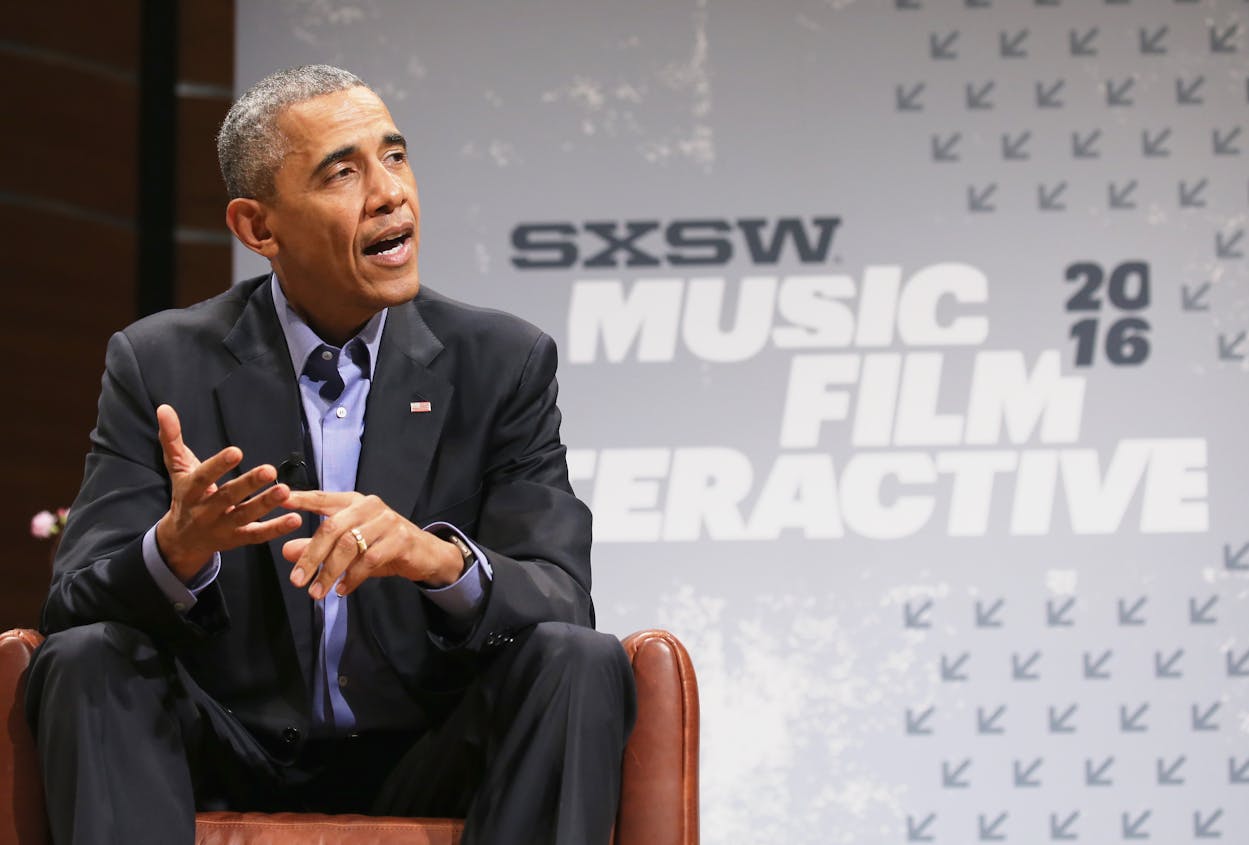When SXSW landed both President Barack Obama and First Lady Michelle Obama for keynote sessions during the conference this past March, it was both a pièce de résistance for the event and something that felt long overdue. On the one hand, landing a sitting president and first lady is a big deal for any conference. On the other, Obama’s presidency is the most SXSW-y thing we’ve ever done collectively as a nation, so it makes a fair bit of sense. Both SXSW and Obama enjoy a reputation of being hip, tech-focused, and innovative. But they also share a tendency to disappoint people who want institutions with such reputations to be more progressive than either of them actually are, and they both enjoy their corporate sponsorship.
So when SXSW and the White House announced SXSL—that’s “South by South Lawn”—earlier this month, it seemed like a formal mingling of both the SXSW and Obama brands (such as they are) that just made perfect sense. And this weekend, as SXSL unveiled its lineup for October, the romance between the two peaked.
According to SXSW Chief Programming Officer Hugh Forrest, “SXSW played a significant role in advising the White House on programming in terms of best practices, talent, and speakers,” but the White House had final say on all decisions. It still sounds very SXSW though. The headlining event is an interview with Leonardo DiCaprio about climate change, following the premiere of DiCaprio’s climate-change documentary Before The Flood—with the interview conducted by President Obama and climate scientist Katharine Hayhoe. The event also has a pair of bands—the Lumineers and Sharon Jones & the Dap Kings—as well as a DJ set by Black Girls Rock! founder Beverly Bond. On top of that, the lovable, ubiquitous scamps who starred as the youthful adventurers in this summer’s delightful Netflix sci-fi series Stranger Things will introduce a student film festival. (We’re going to assume that at least half of why they’re there is because Obama wanted to take a selfie with Dustin.) On top of all of the star power, there’s tech-focused programming like a VR simulation of solitary confinement to draw attention to the issue of incarceration, a “cancer moonshot” exhibit focusing on the efforts to find a cure, and a session with various Silicon Valley CEOs discussing how to “harness technology to solve our biggest, most stubborn challenges.”
All of that sounds familiar if you’ve observed the programming at SXSW or its satellite events like SXSW Eco and SXSW Edu—if not the specifics, then certainly in terms of the tone and ambition of the events. (Additionally, Hayhoe will be revisiting the subject at SXSW Eco later in October, albeit without Obama or DiCaprio lending their star power to the event.) And it also suggests that SXSW’s plans to expand outside of Austin are finally getting some traction. The company has attempted to branch out like that in the past—SXSW V2V launched in 2013 as a startup/entrepreneurial-themed even in Las Vegas, but the conference failed to attract the sort of outsized media attention that the annual Austin event does. After three years, SXSW pulled the plug on the conference, explaining that it “decided to set its sights on different destinations and new challenges” going forward.
A partnership with the White House is certainly a different destination and a new challenge, and it’s the exact sort of thing that SXSW needs to pull off in order to prove that, ancillary events aside, the company isn’t strictly about ten days in March in Austin. There are few venues with the profile of, er, the friggin’ White House, obviously—but if SXSW can find partners that bring their own platform and audience to the table, and use their conference-planning expertise and the power of their brand name, it suggests that the “different destinations and new challenges” might not just be code for “this thing we were trying to do in Vegas wasn’t working.”
All of that matters for SXSW right now. In 2014, SXSW announced an economic impact of $315 million, nearly $100 million more than 2013, and almost $150 million over 2011. In 2015, meanwhile, the study the festival commissioned to determine its economic impact pegged it at $317.2 million; earlier this month, the festival released its 2016 study, and found that it had landed at around $325 million. After years of exponential growth, in other words, SXSW has more or less plateaued in its financial impact in Austin over the past few years.
That’s not a terrible thing. Nobody, even the folks in charge of the Austin event, really wanted to see what a SXSW that was 50 percent larger than the 2014 festival might have actually been like to manage—but it does let us know that, if it’s going to continue to grow, it has to find ways to do that that don’t just put more and more bodies on the ground in Austin in March. SXSW V2V was an initial attempt that didn’t seem to get a whole lot of traction, but SXSL is a lot more potent—and if it goes well, we’ll see what South-By-South-Whatevers start cropping up in other cities around the world.








